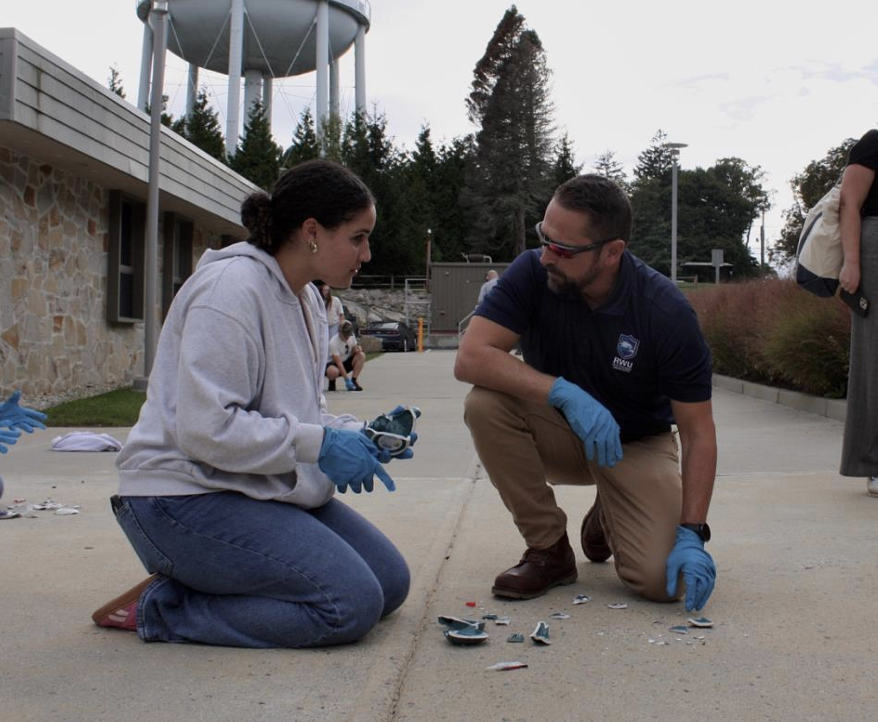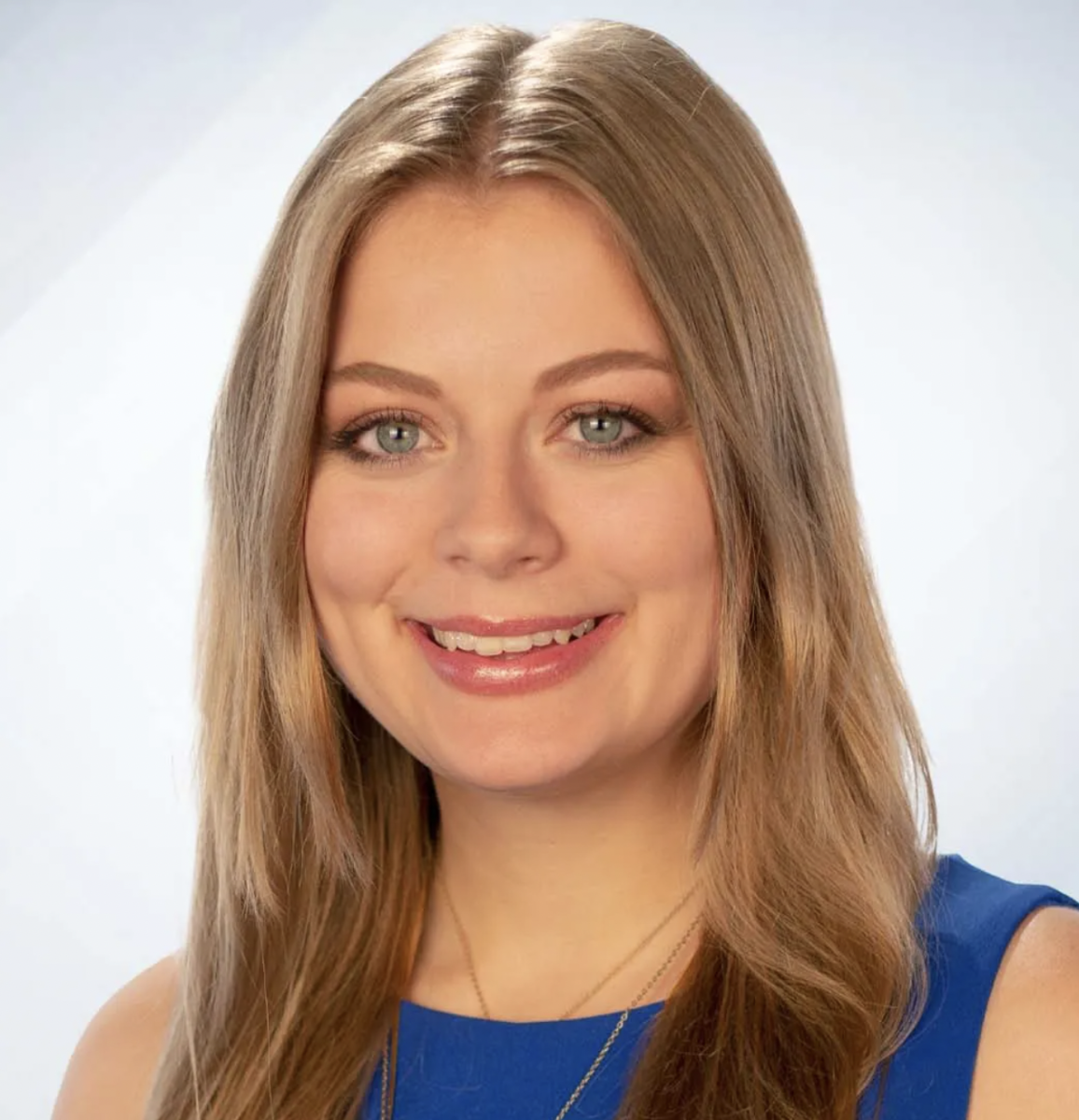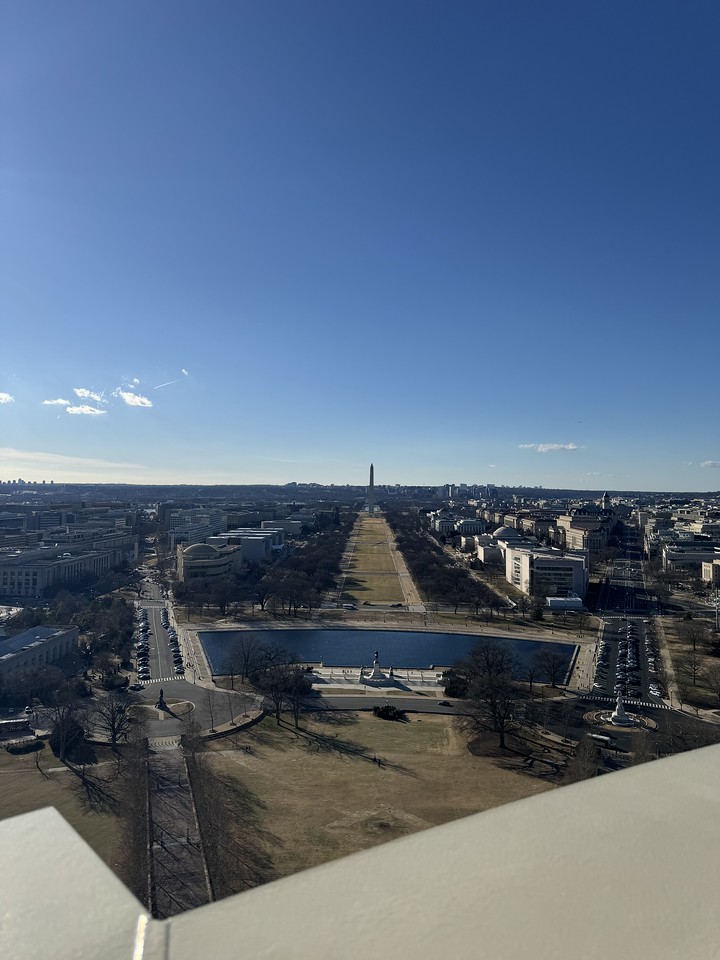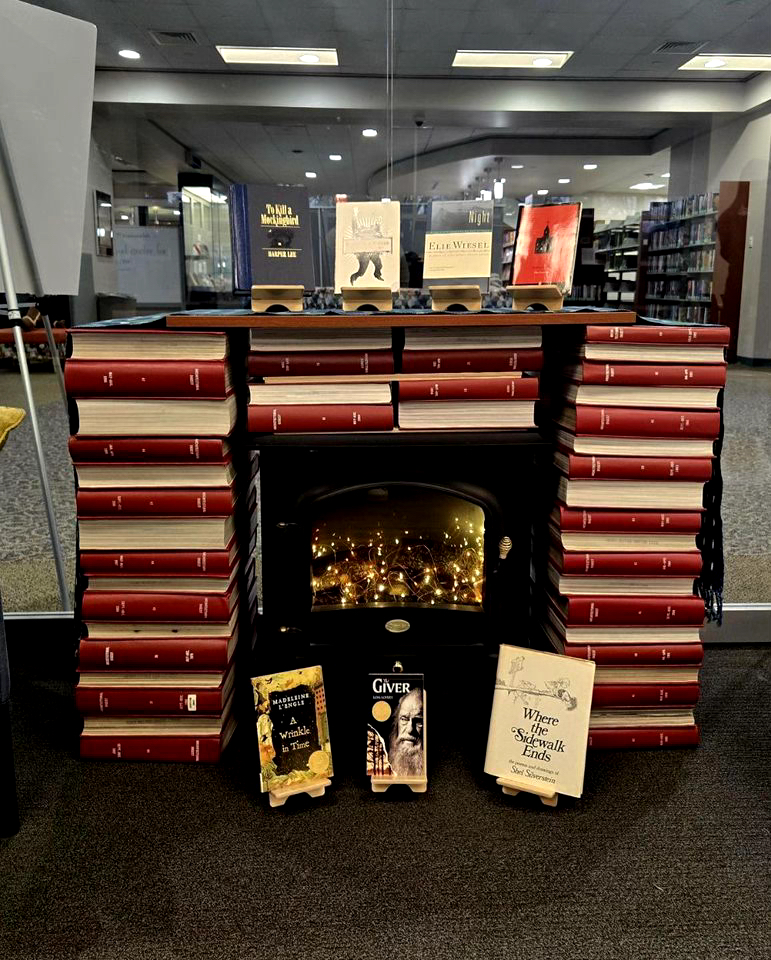On Wednesday, the 17th, I joined Eric Bronson, Professor of Criminal Justice, and Sean Gorman for the mug smashing event.
Sean Gorman is the Assistant Director of the Justice System Training and Research Institute and is also a professor at RWU. Sean Gorman was a patrolman with the Lincoln police department for ten years, then went on to serve as a detective for the same department for another ten years. “I got promoted to Detective Lieutenant on a Friday, and I retired the following Friday, because… Interestingly. This place offered me a job.” Gorman works closely with the women in the Justice Studies Club, who attended and helped run the Mug Smashing event, along with the John Jay program.
Gorman paints a picture of what a real crime scene might look like, emphasizing the importance of allowing students to practice and gain hands-on experience before graduation. These skills can be applied when working with evidence at a crime scene or reconstructing bones, which falls under anthropology and overlaps with forensic science. Gorman can be seen helping students with what strategies might work best when reconstructing the mugs. He offers valuable insights from his firsthand experiences spanning 20 years in law enforcement.
Before the event started, I had the opportunity to interview Eric Bronson, who came to teach at Roger Williams about 8 years ago. He was a professor at Omar University down in Texas. He shared experiences of running this event there and how students loved being able to look back and
remember having this experience, while also keeping the mugs they had reconstructed. When asked if he was excited about this event, he answered, “It’s something hands-on outside of a classroom that is still going to teach the students about possible career opportunities and a little bit about themselves. And that’s what this is all about.” He wanted to do something different, something outside of traditional in-class learning.
Everyone crowded around Bronson as he discussed why we were smashing mugs today.
He talked about the importance and integrity of the evidence at the scene. Maintaining cleanliness and ensuring the chain of custody is maintained, as well as knowing how to preserve evidence.
And with that, the glue and mugs were handed out; students put on the blue plastic gloves, and the
breaking began.
Shards of glass and laughter broke out among the crowd as students started lightly throwing and dropping the mugs, so they could pick up all the tiny pieces and start reconstructing them back into their original mug shape. People split up in pairs or just a single person to a single mug. Professors and people alike stopped to watch what could have looked like a weird, wild fit of rage, but it was a valuable learning experience.
Once the initial smashing ended, silence fell, and the ticking of minds grew louder as people began gluing small pieces to other small pieces, trying to line everything up just as it was.
Some students entered confident in their ability to reconstruct the mug, while others lacked a strategy but kept the main goal in mind. Some students just had fun and approached it in whichever way felt right. Sean Gorman and Eric Bronson walked around, giving tips and advice, sometimes
even getting down on the ground to show what someone with experience would do when faced with this task at a real crime scene.
I also took part in this event. I picked my own mug and smashed it myself. I started by lining up the pieces according to the pattern, then began gluing them together. I took the glove off and used the edge to smooth out the glue, so it gets in between the pieces and sticks better. My efforts were taking me in the right direction, but by the time I was done, I had superglue all over my fingers; however, my mug was back together!
During the event, Dean of Criminal Justice Vaughn J. Chrichlow was walking around taking pictures like a proud father looking at his department thrive. In an interview, he shares his insight and opinion on the smashing of the mugs.
When asked his thoughts on faculty getting involved with students, his face brightened
“It’s not just about having a butt in a seat facing the front of a room, but it’s about actually coming out and doing activities. So, there is something really dynamic about that in terms of partnering with faculty on things.”
He discussed what the event meant to him and what he hopes others will take away, other than their mug, of course
“There’s some great symbolism here in terms of broken things can be put back together. So, I think in times like these that, where people feel uncertain about things, there’s so many difficult issues to navigate. Having agency to put something back together, it identifies us as folks with agency, but also it shows that we can also be problem solvers. And I think that it also is reflective of what we do in the School of Justice Studies, that we are trying to solve problems, whether it is helping to
improve the quality of life, people in general, or helping to fix or reform a system. It’s not about
how challenging the task is, but the sense of accomplishment when you are done with it. What do these accomplishments do for you as a student? It helps to build confidence.”
The best part was watching everyone walk away with their broken mugs that were mended back together by hand. They left with a reminder that, in both justice and life, even broken pieces can be made whole again.
With the help of some superglue.







